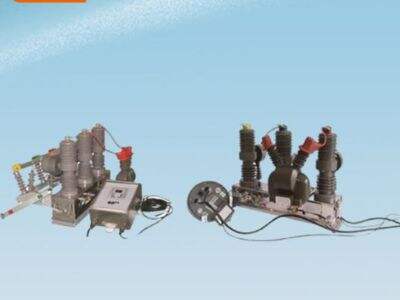குறைந்த மின்னழுத்த சுவிட்சுகேர் மற்றும் நடுநிலை மின்னழுத்த சுவிட்சுகேர் பற்றி உங்களுக்கு மேலும் தெரிந்து கொள்ள விருப்பமா? இந்த சாதனங்கள் மின்சார வரிகளில் பயனுள்ளதாக இருக்கின்றன. மின்சார பாய்ச்சத்தை கட்டுப்படுத்தவும், பாதுகாக்கவும் இவை உதவுகின்றன.
குறைந்த மின்னழுத்தம் மற்றும் நடுநிலை மின்னழுத்த சுவிட்சுகேர் – வேறுபாடு என்ன?
முதலில், குறைந்த மின்னழுத்த மற்றும் நடுநிலை மின்னழுத்த சுவிட்சுகேர் இடையேயான வேறுபாடு பற்றி பார்ப்போம். குறைந்த மின்னழுத்த சுவிட்சுகேர் 1,000 வோல்ட் வரை இயங்குவதற்கு தரமளிக்கப்படுகிறது. நடுநிலை மின்னழுத்த சுவிட்சுகேர் 1,000 முதல் 38,000 வோல்ட் வரையிலான மின்னழுத்தத்தை கையாளும் திறன் கொண்டது. இதனால்தான் குறைந்த மின்னழுத்த சுவிட்சுகேர் வீடுகளிலும், வணிகங்களிலும் பயன்படுத்தப்படுகிறது, அதே நேரத்தில் நடுநிலை மின்னழுத்த சுவிட்சுகேர் மின்உற்பத்தி நிலையங்கள் மற்றும் தொழிற்சாலைகளில் பயன்படுத்தப்படுகிறது.
பாதுகாப்பு தரநிலைகளில் முக்கியமான வேறுபாடுகள் உள்ளன
மின் அமைப்புகளில் பாதுகாப்பு என்பது மிகவும் முக்கியமான கருத்துரு ஆகும். அனைவரையும் காயமில்லாமல் பாதுகாக்கும் வகையில், மின்சார இணைப்பு உபகரணங்கள் மிகவும் கணுக்களான விதிமுறைகளுக்கு உட்பட்டு இயங்க வேண்டும். குறைந்த மின்னழுத்த மின்சார இணைப்பு உபகரணங்கள் IEC 61439 போன்ற வழிகாட்டுதல்களின் படி இயங்குகின்றன. இந்த விதிமுறைகள் மின்சார இணைப்பு உபகரணங்களை வடிவமைப்பது, கட்டுவது மற்றும் சோதிப்பது குறித்து வழிகாட்டுகின்றன. மத்திய மின்னழுத்த மின்சார இணைப்பு உபகரணங்கள் IEC 62271 போன்ற தனித்துவமான விதிமுறைகளுக்கு உட்பட்டு இயங்குகின்றன, இவை உயர் மின்னழுத்த மின்னாற்றல் உடைப்பான்களை எவ்வாறு கட்டி மற்றும் சோதிக்க வேண்டும் என்பதை குறிப்பிடுகின்றன.
குறைந்த மின்னழுத்தம் மற்றும் மத்திய மின்னழுத்த மின்சார இணைப்பு உபகரணங்கள் எதற்காக பயன்படுகின்றன?
குறைந்த மின்னழுத்தம் மற்றும் மத்திய மின்னழுத்த மின்சார இணைப்பு உபகரணங்கள் எதற்காக பயன்படுகின்றன என்பது மின்சார உற்பத்தி அமைப்பின் தேவைகளை பொறுத்து அமைகின்றது. குறைந்த மின்னழுத்த மின்சார இணைப்பு உபகரணங்கள் வீடுகள், மருத்துவமனைகள், அலுவலகங்கள் போன்ற குறைந்த உயரம் கொண்ட இடங்களுக்கு ஏற்றதாக உள்ளது. இது மின்சார விநியோக இடங்களிலும் பயன்படுத்தப்படுகின்றது. மத்திய மின்னழுத்த மின்சார இணைப்பு உபகரணங்கள் பெரிய நிறுவனங்களில் பயன்படுத்தப்படுகின்றன, அங்கு மின்சாரத்தை தொலைதூரங்களுக்கு அனுப்ப உயர் மின்னழுத்தம் தேவைப்படுகின்றது.
மின்சார அமைப்புகளில் மின்சார இணைப்பு உபகரணங்கள் எவ்வாறு உதவுகின்றன
மின் அமைப்புகளை பாதுகாப்பாகவும் செயல்பாட்டிலும் வைத்திருக்க மின் இணைப்பு பெட்டி மிகவும் அவசியமானது. இது மின்சார மூலத்திற்கும் மின் சாதனங்களுக்கும் இடையே ஒரு தடைச் சுவரை போல செயல்படுகிறது. இது மின்சார பாய்ச்சத்தை கட்டுப்படுத்துகிறது மற்றும் மின்தடை அல்லது குறுக்குத் தொடர்பை தவிர்க்க உதவுகிறது. மேலும், பழுதடைந்த உபகரணங்களை தனிமைப்படுத்தவும், மின்சாரத்தை மறுபாதை அமைக்கவும் மின் இணைப்பு பெட்டி பயன்படுகிறது, இதன் மூலம் விபத்துகள் நிகழும் வாய்ப்பை குறைக்கிறது மற்றும் மொத்த அமைப்பு செயல்பாடுகளை மேம்படுத்துகிறது.
மின் இணைப்பு பெட்டியின் பாதுகாப்பை உறுதி செய்தல்
மின் இணைப்பு பெட்டி அமைப்புகள் பாதுகாப்பாக செயல்பட அவற்றிற்கு தொடர்ந்து பரிசோதனைகளும் சோதனைகளும் தேவைப்படுகின்றன. இந்த பரிசோதனைகள் பிரச்சினைகளை அவை பெரிய அளவில் பாதிப்பு ஏற்படுத்துவதற்கு முன்னரே கண்டறிய உதவுகின்றன. விபத்துகளை தவிர்க்க மின் இணைப்பு பெட்டியுடன் பணியாற்றும் நபர்களை கற்பித்து விழிப்புணர்வு ஏற்படுத்துவதும் முக்கியமானது. பாதுகாப்பு விதிமுறைகளை பின்பற்றுவதன் மூலமும், ஒழுங்குமுறைகளை தொடர்ந்து பின்பற்றுவதன் மூலமும், நிறுவனங்கள் நீண்டகாலம் நம்பகமான மின் இணைப்பு பெட்டி அமைப்புகளை நம்பியிருக்க முடியும்.
முடிவாக, மின்சார அமைப்புகளில் குறைந்த மின்னழுத்த சுவிட்சுகேர் மற்றும் நடுநிலை மின்னழுத்த சுவிட்சுகேர் ஆகியவை வெவ்வேறு நோக்கங்களைக் கொண்டுள்ளன. இந்த வேறுபாடுகளை புரிந்து கொள்வது அமைப்புகள் சரியான வகையில் இயங்கவும், மக்கள் பாதுகாப்பாக இருக்கவும் உதவும். பாதுகாப்பு மற்றும் விதிமுறைகளை பின்பற்றுவதை கண்காணிப்பதில் கவனம் செலுத்துவதன் மூலம், நிறுவனங்கள் பல்வேறு தேவைகளுக்கும் சிறந்த சுவிட்சுகேர் தீர்மானங்களை வழங்குகின்றன.
உள்ளடக்கப் பட்டியல்
- குறைந்த மின்னழுத்தம் மற்றும் நடுநிலை மின்னழுத்த சுவிட்சுகேர் – வேறுபாடு என்ன?
- பாதுகாப்பு தரநிலைகளில் முக்கியமான வேறுபாடுகள் உள்ளன
- குறைந்த மின்னழுத்தம் மற்றும் மத்திய மின்னழுத்த மின்சார இணைப்பு உபகரணங்கள் எதற்காக பயன்படுகின்றன?
- மின்சார அமைப்புகளில் மின்சார இணைப்பு உபகரணங்கள் எவ்வாறு உதவுகின்றன
- மின் இணைப்பு பெட்டியின் பாதுகாப்பை உறுதி செய்தல்

